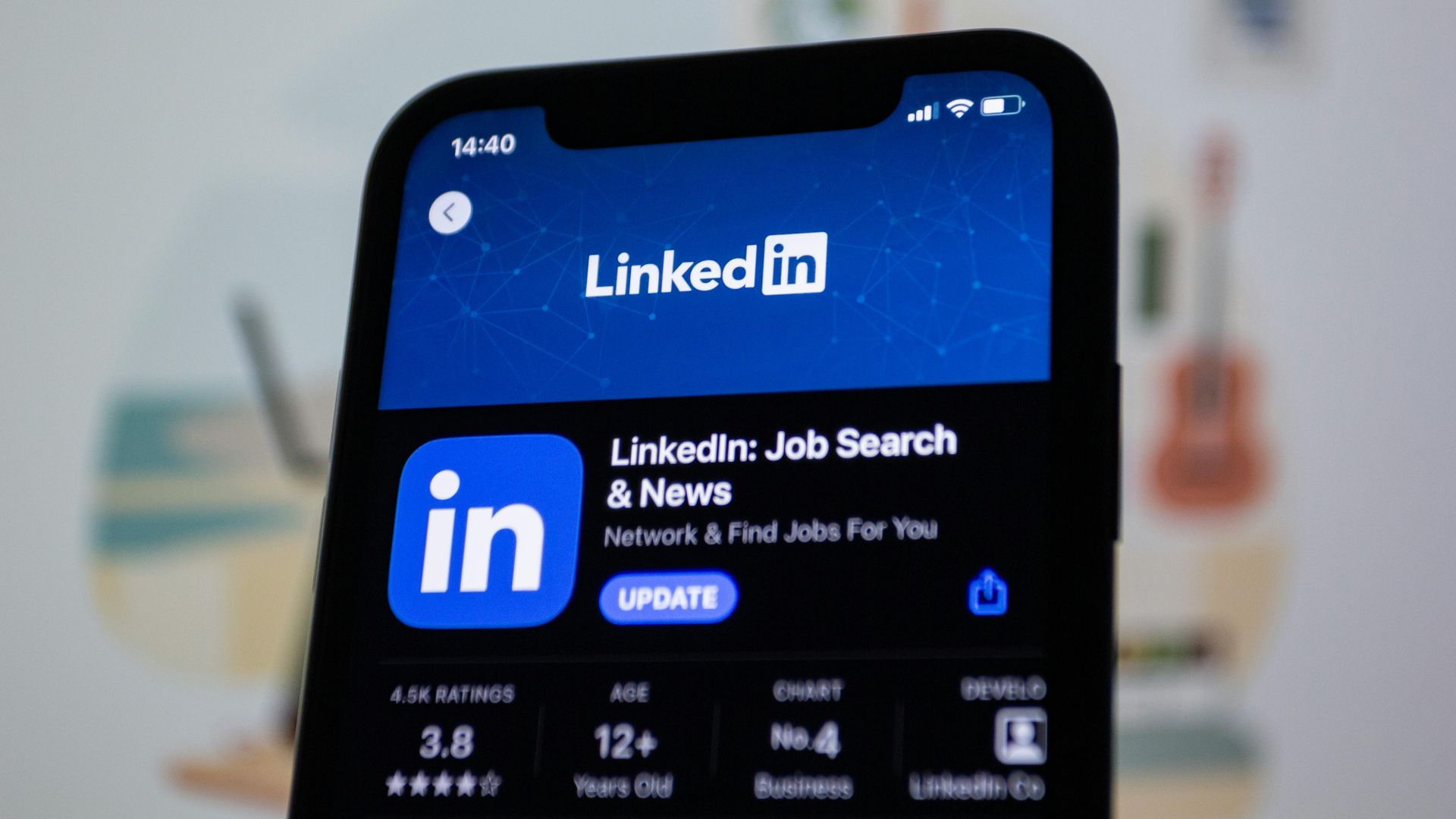Blogging for Fun and Profit: Build Blogging Skills
August 9, 2021
So, your recruitment business has decided to take the leap into the blogosphere. Great! There’s no shortage of reasons why blogging can benefit your business. However, the world of business blogging may still feel like uncharted territory. What should your blog discuss? How many posts should get published, and how often? Just who the heck is going to read this stuff, anyway? This blog about blogging (a meta-blog?) is intended to help you hit the ground running with tips on creating timely and fresh blogs that meet the needs and engage the minds of your readership.
Lay the foundation
A great blog starts with a great plan, and the planning stage is where you first answer the big questions that will determine what you write about, who you write for, and why you’re writing in the first place. Before you fire up your keyboard, be sure to nail down answers to the following questions:
Pick your topics
Are you drawing a blank every time you sit down to write? It may be easy to simply write a product feature or fluff up a sales pitch, but it’s important to remember that the point of your blogs is to provide value to your audience, not to sell to them. Take a look at your buyer personas and their pain points or problems, and assemble them into categories. These categories and their relevant personas will focus your writing and guide your use of keywords to optimize the SEO boost that the post provides. From here, you can begin to address some general topics.
Another great source of blogging inspiration is your existing customer base. Think about the kinds of questions from recruitment clients and job seekers that you answer on a regular basis. Many of these represent common pain points, and can easily turn into full blog posts. For every one customer who comes in or sends and email with a common question, just imagine how many there are tapping their query into Google in search of an answer!
For example, a furniture store might write a blog on the difference in durability between leather, vinyl, and fabric upholsteries, or the different types of mattresses and their levels of support. An informative post that answers common questions and gives your readers information that they can act on is going to rank higher on search engines and position your business as a source of information that readers can trust.
For a recruitment agency, you could discuss the wages and benefits received in a certain industry or job type etc.
Content (not copy) is king
Getting the copy down is one thing, but your blog will be as dry as a bone without engaging content to supplement that copy. The content that your copy supports, more than anything, is what sets your blog apart from your competitors and drives the solution to your readership’s problem.
It’s best to make your own, but there are plenty of resources out there for those who don’t collect data or employ a design team.
Provide relevant and substantiated statistics in the form of graphs and infographics—these add credibility to your posts, and can provide shock value when used properly.
Use visuals to break up the text. The text of headers and sub-headers can often be incorporated into a relevant image that draws the reader’s attention and invites them to read further. A well-chosen graphic or photograph can serve to break up the monotony of plain text as well as add a visual frame to the information the audience receives.
What’s your Story?
Tell compelling stories (and write snappy titles). Narrative is a powerful tool, and we’ve known how to use it in sales and marketing for a long time. The same goes for your blogs. Framing the movement from conflict to resolution as a journey makes your audience more receptive to the information you have to share and puts it within a familiar and memorable framework.
Start with choosing a narrative voice. Anecdotes and stories about your business can use a first-person voice to draw readers in and demonstrate your unique way of overcoming challenges in ways that others can learn from and put into practice. A second-person voice (like the one used in this blog) allows readers to visualize themselves acting out your solutions as your offer them, while a third-person voice is suited to communicating stories about how your business has been part of another customer’s success.
Leverage your buyer personas and their challenges to tell stories that will engage your audience and show how your business fits into their lives. Your posts don’t have to read like a novel, but putting your info in action will help transform your blog from a lecture into a success story.
Sharing is Caring
You’ve written something you’re proud of, so be sure to put it out there! Share your new blog on your recruitment website, LinkedIn, Facebook, other marketing channels, and put the work in to gain readers other than Googlers and regular visitors to your site. Leveraging your business’ social media following to widen your blog’s audience has the added benefit that a new post that a follower finds useful or interesting is always easy to share with their own network. The more readers that come to see your recruitment business as a trusted source of information, the better!
Your blogs can (and should) also link to one another. Where there’s an overlap in information or your blog posts address similar issues, have them link to each other! An engaged reader will always be ready to find out more, and demonstrating that you have more information to offer is never a bad thing.
Finish Strong
Finally, and importantly, bring things home with a with a call to action. Have you ever gotten to the end of an interesting article, how-to or blog post and been filled with the inspiration to immediately test what you’ve learned? While the point of your blog isn’t to sell, it’s important to give your readers something to engage with that allows them to take action and apply their new knowledge. Whether it’s more content, a link to a product or promotion or a contact form, your readers will have a way to act on their inspiration, and you will have a way to track engagement and turn readers into leads.
Here’s hoping this blog has inspired you to start writing your own! By following these tips, you should be well on your way to inspiring your own readers with engaging stories, compelling content, and valuable information that will position your business as a reliable source of information. Write well, help others and have fun!
Make blogging fun! Manage your blogs and share it to social media using the Shazamme Dashboard.

By Nicole Clarke
•
October 28, 2025
How to Track Your LinkedIn Leads (and Finally See What’s Working) Most recruitment agencies post regularly on LinkedIn, but few actually know what’s working. You might get great engagement, but how do you know if those likes and clicks are turning into new clients or candidate enquiries? If you’re not tracking your leads, you’re flying blind. The good news is that it’s incredibly easy to fix. You just need a simple setup using UTM tracking and Google Analytics (GA4) . Here’s how to do it properly so you can see exactly which posts, people, and campaigns are driving real results. Step 1: Add UTM Links to Every LinkedIn Post Whenever you share a link on LinkedIn, whether it’s to a job, a blog, other content or a “book a demo” page etc you should add a little bit of tracking code at the end of your URL. This code is called a UTM , and it tells you exactly where your traffic came from once people land on your website. Example: https://www.xyzrecruitment.com/book-demo?utm_source=linkedin&utm_medium=social&utm_campaign=demo_launch&utm_content=post1 Here’s what each tag means: utm_source=linkedin → tells you the traffic came from LinkedIn utm_medium=social → identifies it as an organic social post utm_campaign=demo_launch → labels your specific campaign utm_content=post1 → helps you see which post or person shared it You can use Google’s free Campaign URL Builder to generate these in seconds. Step 2: Use Tagged Links in Every Post and Profile Once you’ve created your UTM-tagged links, use them everywhere you share links from LinkedIn: Company updates Recruiter and consultant posts LinkedIn articles or newsletters Comments and DMs If multiple people in your team are posting, give each person their own UTM content tag (for example: utm_content=sarah_post or utm_content=liam_article ) so you can easily see who’s driving the most traffic or conversions. Step 3: Track the Results in Google Analytics 4 With your UTM links live, it’s time to see what’s working. In Google Analytics (GA4) , go to: Reports → Acquisition → Traffic Acquisition Filter by: Source / Medium = linkedin / social Now you’ll see: How many visitors came from LinkedIn Which pages they viewed Whether they filled out a form, booked a demo, or applied for a role That’s how you finally connect your LinkedIn activity to actual business outcomes. Step 4: If You Run Paid Ads — Connect LinkedIn to GA4 If you’re also running LinkedIn Ads , connect your LinkedIn Campaign Manager to GA4 . This gives you the complete picture, not just clicks and impressions, but which ads and audiences are driving conversions. Step 5: Create a Simple Dashboard Once you’re tracking everything, pull it together in a Google Looker Studio (Data Studio) dashboard. You’ll get a clear visual of: Traffic from LinkedIn (organic + paid) Conversions by campaign Which recruiters generate the most leads Your overall ROI from LinkedIn It’s simple, visual, and finally gives you proof of what’s working. Why This Matters for Recruitment Agencies Without UTM tracking, your LinkedIn traffic shows up in Google Analytics as “direct” or “referral”, which tells you nothing. With proper tracking, you’ll know: Which campaigns or posts bring in new client leads Which recruiters or consultants drive the most engagement What content types actually convert It’s not about guessing, it’s about growing with real data. Quick Recap Step 1: Add UTM links to every LinkedIn post — Tracks traffic accurately Step 2: Use consistent naming — Keeps your data clean Step 3: Check GA4 reports — See conversions clearly Step 4: Connect LinkedIn Ads — Measure full ROI Step 5: Build a dashboard — See what’s working at a glance Final Tip Consistency is key! One untagged link can throw off your data. Once you start tracking properly, you’ll quickly see which content drives leads and where to focus your marketing energy next. If you’d like help setting up UTM links or building a simple LinkedIn-to-GA4 dashboard, contact the team at www.shazamme.com we can show you exactly how to do it right!

September 29, 2025
The trick with AI is not simply using it but using it intelligently. This means understanding AI's limitations and using it to complement, not replace, human expertise. While proper use of AI is essential for everyone, it’s especially critical for agencies that rely on efficiency for survival and prosperity. Falling behind in AI adoption can lead to missed opportunities and reduced market relevance. Therefore, staying informed about AI advancements is crucial for marketing agencies. As AI tools evolve rapidly, agencies must continuously update their knowledge and integrate the latest innovations. This blog post compiles key resources to help agencies stay informed and proficient in AI marketing. Marketing AI Institute Blog The Marketing AI Institute blog is a premier resource that covers all aspects of AI in marketing. It offers insights into AI tools, trends, and practical applications, helping marketers understand how to integrate AI into their strategies effectively. The blog features articles on AI-powered marketing automation, customer personalization, and AI-driven content creation. It has the option to filter by marketing agencies to get a few articles tailored for marketing agencies on interesting topics like how to win more business with AI. Think of it as a one-stop shop for foundational knowledge on how to integrate AI into your marketing strategies effectively. Digital Agency Network Blog Digital Agency Network's blog is a great resource for marketing agencies in general. It is also one of the best resources for getting informed about AI for agencies (especially its AI Marketing category). If you’re wondering what an AI agency is or whether you’d like to become one, this is the place to read about it. It’s also the place to discover how AI is transforming digital marketing and advertising, offering insights into successful AI-driven campaigns and strategies. Jasper AI Blog Jasper AI’s blog focuses on leveraging AI for content creation. Therefore, it is particularly useful for agencies seeking to improve their content marketing strategies using AI. Each month, quite a bit blog posts are published, which is pretty fitting for a blog belonging to an AI content generation company like Jasper AI. Here, too, you can filter by “Marketing Strategy” for a more specific, marketing-like point of view. HubSpot Blog HubSpot’s blog needs no introduction, but I’ll introduce it anyway. Widely recognized as one of the leading B2B content hubs in the marketing industry, HubSpot’s blog serves as a comprehensive resource for marketers, sales professionals, and customer service representatives, presenting both introductory content for beginners and advanced strategies for experienced professionals. In short, this is one of the biggest resources for everything B2B. Its Marketing sub-blog is the perfect place to stay updated with marketing insights, ideas and inspirations, and the lobby page features some great AI marketing articles under the AI category. HubSpot excels at breaking down complex topics into easy-to-understand pieces, making them a great resource for agencies at any stage of their AI journey. Shane Barker’s blog Shane Barker's Blog is a prominent resource for marketers seeking insights and strategies on digital marketing, influencer marketing, SEO, social media, and AI applications in marketing. Known for its practical advice and actionable tips, the blog is recommended for marketing professionals. Shane Barker frequently shares case studies and data-driven insights, making his blog a great resource for agencies seeking to implement tangible AI marketing strategies. Jounce Jounce is a company dedicated to providing AI-driven solutions to enhance marketing strategies. Their blog provides useful insights into AI-driven marketing strategies, focusing on how AI can optimize various aspects of marketing, including content creation, customer engagement, and marketing automation. AdWeek AdWeek's AI category is a key resource for staying informed about how AI is impacting the advertising industry. The publication features articles on the latest AI innovations, trends, and case studies, highlighting how top brands are using AI to enhance their marketing efforts. Their focus on industry news and case studies makes it a valuable resource for staying on top of the latest advancements in AI advertising. AdExchanger AdExchanger is a leading publication that covers data-driven marketing, advertising, and technology. The site AI category features deep dives into AI and its implications for digital marketing and advertising. It provides valuable insights into how AI technologies are being used to optimize ad spend, improve targeting, and enhance customer experiences. MarketingProfs MarketingProfs is a well-established resource that offers a wealth of information on marketing strategies, tools, and best practices. The site includes a dedicated section on AI in marketing , providing insights into how AI can be leveraged to improve various marketing functions. With a mix of articles, webinars, and training programs, MarketingProfs helps marketers stay informed about the latest AI trends. Spiceworks Spiceworks is a network that connects technology professionals with the resources they need to make informed decisions. Their dedicated section on AI in marketing offers insights into how AI technologies are transforming marketing strategies. The blog covers topics such as AI-driven analytics, personalized marketing, and the integration of AI in various marketing platforms. Influencer Marketing Hub The Influencer Marketing Hub’s AI Marketing section is an excellent resource for understanding how AI is shaping influencer marketing. It features articles on AI tools for influencer identification, campaign optimization, and performance tracking. This blog is particularly useful for agencies focusing on influencer marketing and looking to integrate AI into their strategies.








